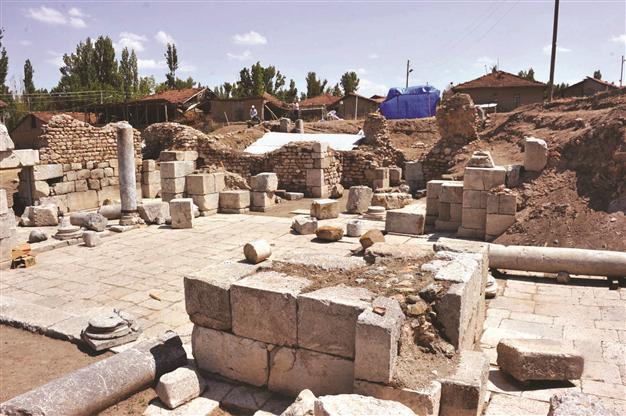Sebastopolis Ancient City digs start again
TOKAT - Anadolu Agency

Architectural pieces have been recovered during the digs in Sebastopolis.
Tokat’s Sulusaray district is currently home to a new excavation project of Sebastopolis Ancient City, where excavations have resumed after 22 years. The aim of the project is to make the area open to tourism.
Gaziosmanpaşa University Archaeology department academic Şengül Dilek Ful said for a very long time Sebastapolis had not hosted any excavation project and this would be the first one for many years. The excavation works will be done with the protection of Tokat Museum officials. “Roman bath” and “Byzantium Church” buildings have been cleaned and the excavations started with this cleaning, said Ful.
The excavations are still continuing to clean the area of the heating system and in the coming years the architecture of the hamam and other buildings are expected to be excavated, she said.
Architectural pieces recovered during the diggings organized by the Directorate of the Tokat Museum in 1987 showed that the city was an important settlement during the Hellenistic, Roman and Byzantine periods. The artifacts recovered at the Comana Pontica (Old Tokat) are very similar to those recovered from the city of Sebastopolis, and so it is probable these two ancient cities had a close relationship in the past.
Important city in the pastSebastopolis is at the crossroads of the east to west route and south and central to north route. This shows the importance of the city during the Roman and Byzantine periods. The ancient city was surrounded by a city wall made of small, neatly cut stones put together without using mortar. A circular shape temple was discovered at the northeast side of the city, it was made of marble floor. The baths are situated at the eastern part of the Sebastopolis, where the water needed was recovered from the thermal spring located about three kilometers to the southwest.
